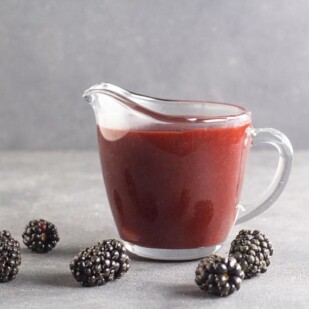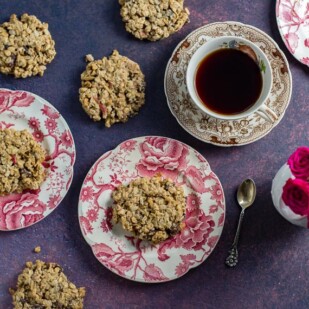Our Low FODMAP Stuffed Zucchini Boats are vegetarian, feature a rice, tofu and cheese filling and are covered with tomato sauce and more cheese. Please note that this recipe is for those who are in their Challenge Phase or beyond (more on that below).
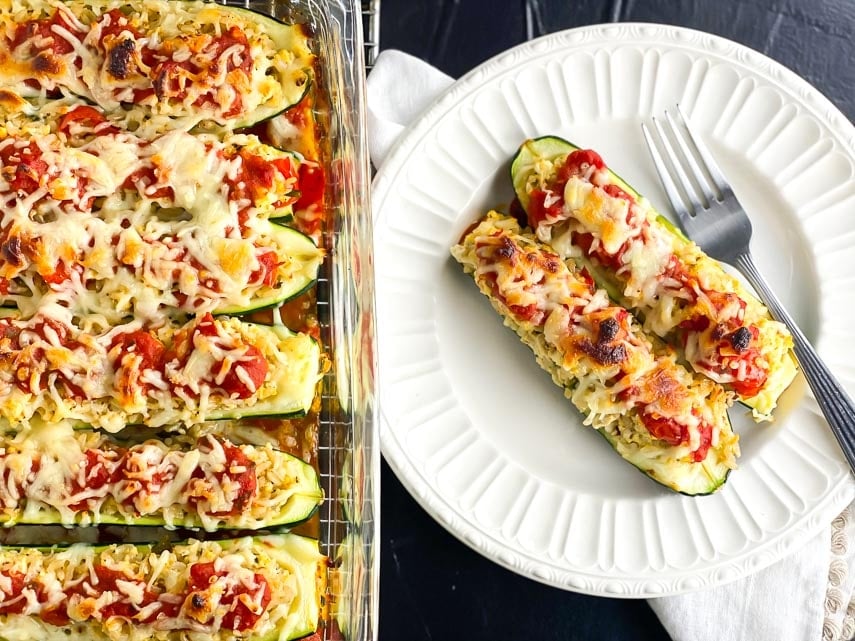
Let’s Talk Zucchini & FODMAPs
Both Monash University and FODMAP Friendly have lab tested zucchini (also called marrow or courgette). FODMAP Friendly gives it a “Pass” at ½ cup (75 g) portions. Monash lists ⅓ cup (65 g) as low FODMAP and specifies fructans as the FODMAP.
Both lab results are reputable and we are using the Monash as our default for this recipe.
Regardless of which information you reference, this is plenty of zucchini to incorporate into recipes, but not necessarily as the star of the show, as in this recipe for these Stuffed Zucchini Boats. That is why this recipe is recommended for when you are stable and beyond Elimination.
What Does 65 g Of Zucchini Look Like?
Here is what 65 g of zucchini looks like, just to give you an idea.
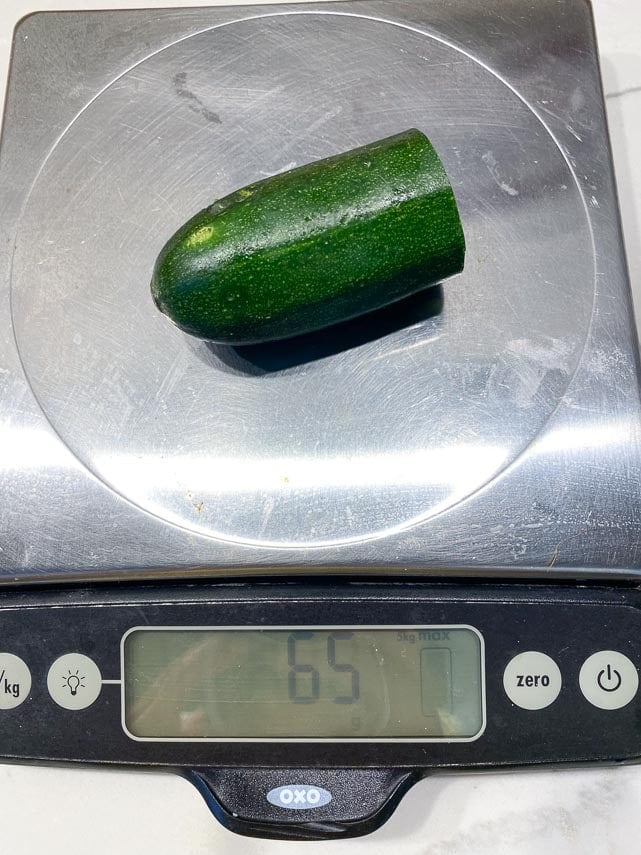
Held in my hand might give you better perspective:
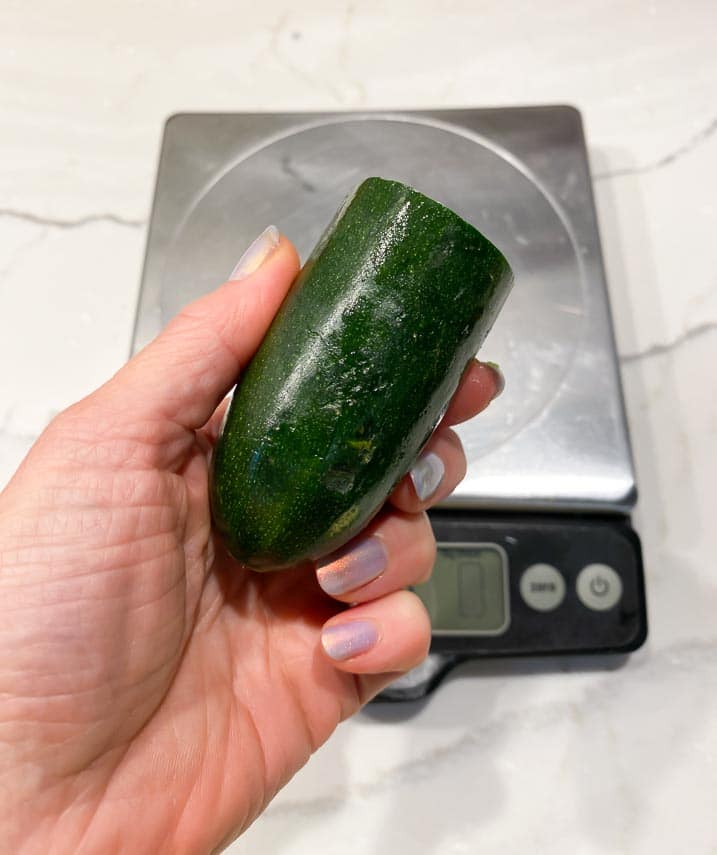
And here are some other delectable zucchini recipes – all of which have low FODMAP serving sizes.
- Zucchini Bread
- Zucchini Banana Bread
- Roasted Zucchini with Lemon & Garlic
- Eggplant, Zucchini & Tomato Pasta Sauce
- Ratatouille
- Vegetable Latkes
- Zoodles, Noodles & Sprouts Salad
- Grilled Vegetables
- Herb Marinated Grilled Chicken & Vegetable Kebobs
How To Make Low FODMAP Stuffed Zucchini Boats
Position rack in middle of oven. Preheat oven to 400°F (200°C). Have ready a 13-inch by 9-inch (33 cm by 23 cm) ceramic or oven-proof glass baking dish.
Start with average sized zucchini – not baby ones, and not too large. Mine were about 5 or 6-ounces (140 g to 170 g) apiece. Use your scale!
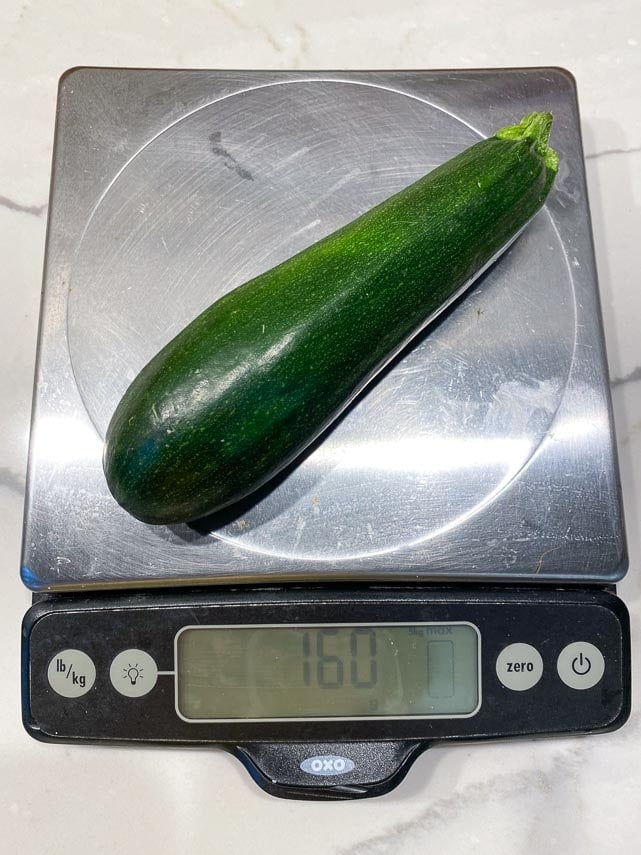
Use a teaspoon to scoop out the middle of the zucchini (all the seeds and some flesh), leaving a thin wall of flesh all around. Discard the innards.
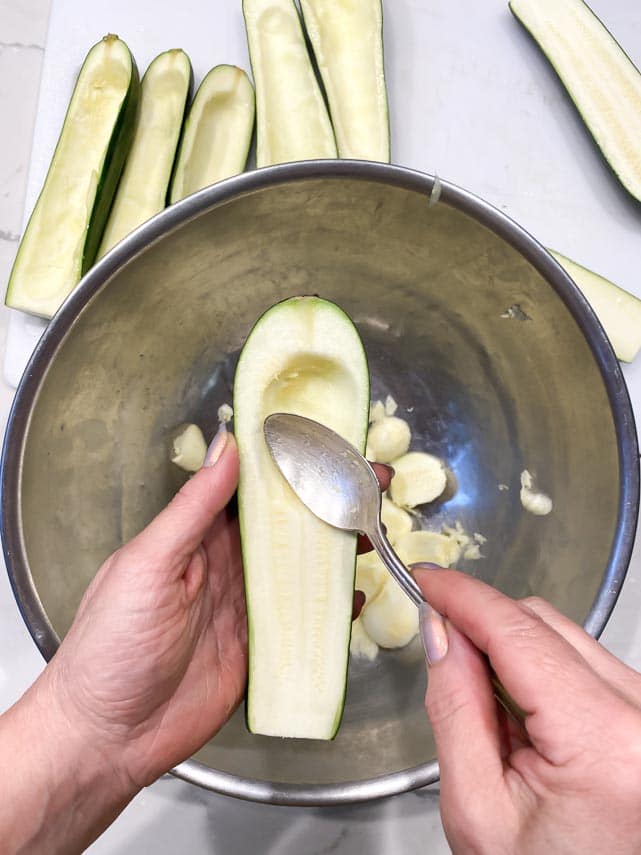
Heat the oil in a skillet over medium heat and sauté the scallions and cherry tomatoes, adding your dried herbs and hot pepper flakes, and sauté for a few minutes or until vegetables soften.
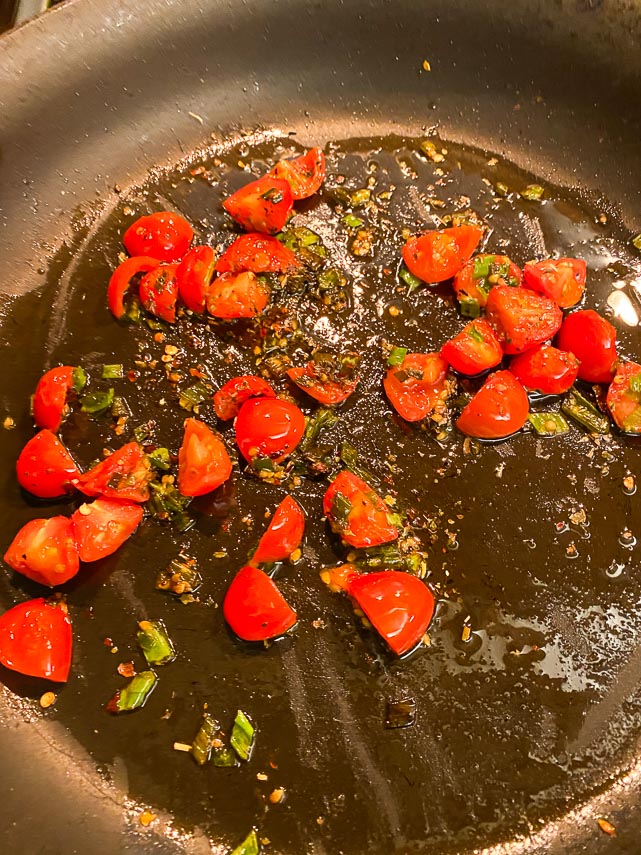
Scrape into a mixing bowl. Add the rice, tofu, egg, a quarter of the cheese (do this by eye), to the sautéed tomato mixture.
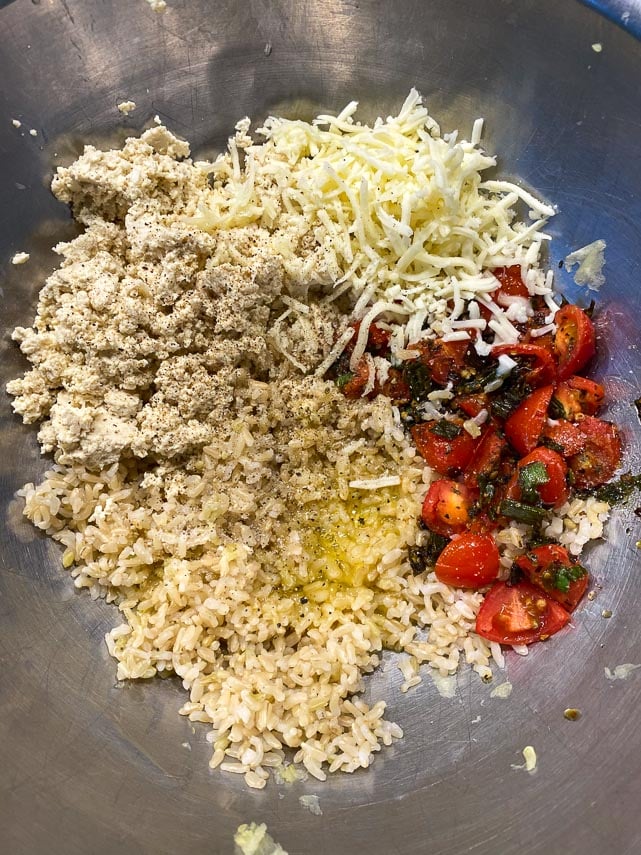
Stir together well and season well with salt and pepper.
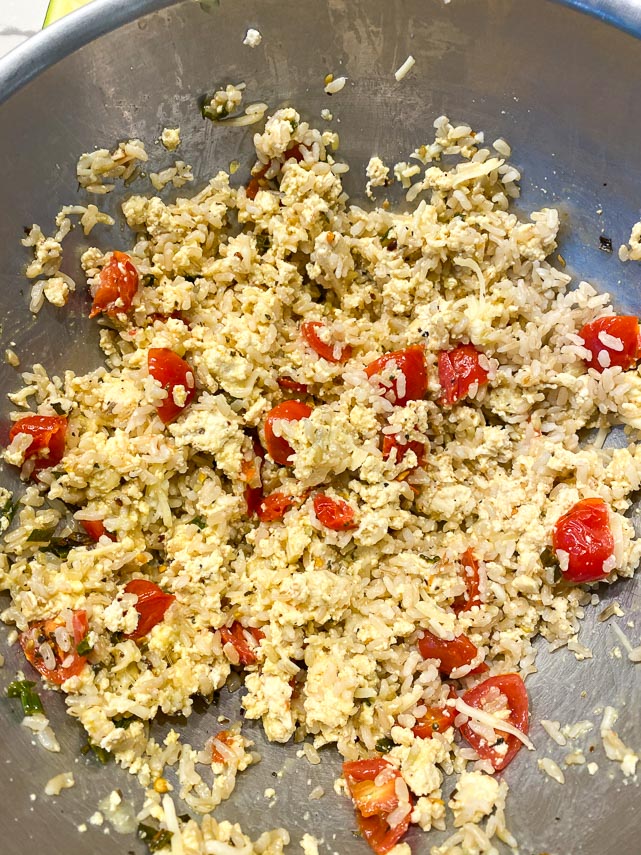
Spread a bit of the tomato sauce in the bottom of the baking dish.

Stuff each zucchini half with your rice stuffing, mounding gently. Nestle the zucchini in the pan, crosswise; you might have to arrange the last one perpendicular in order to fit.
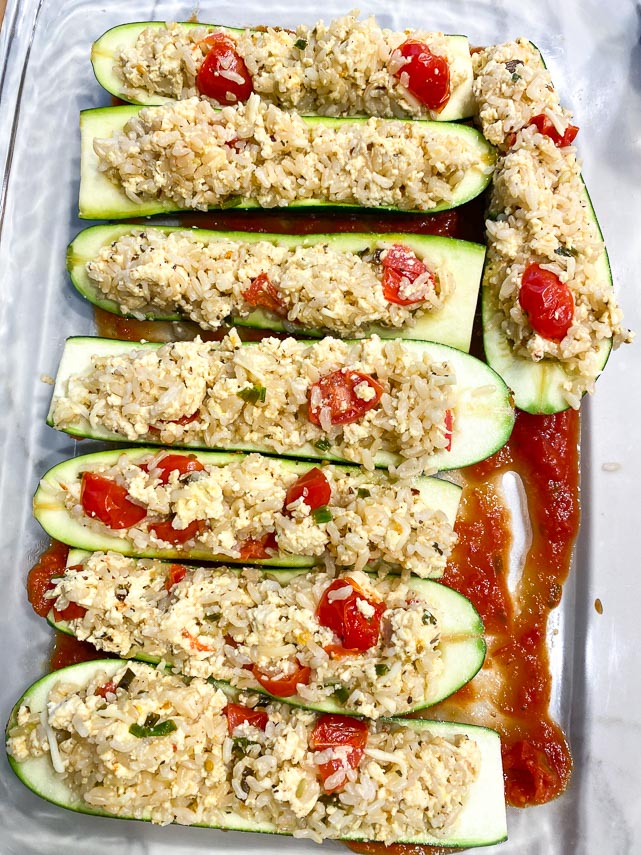
Top with remaining tomato sauce…
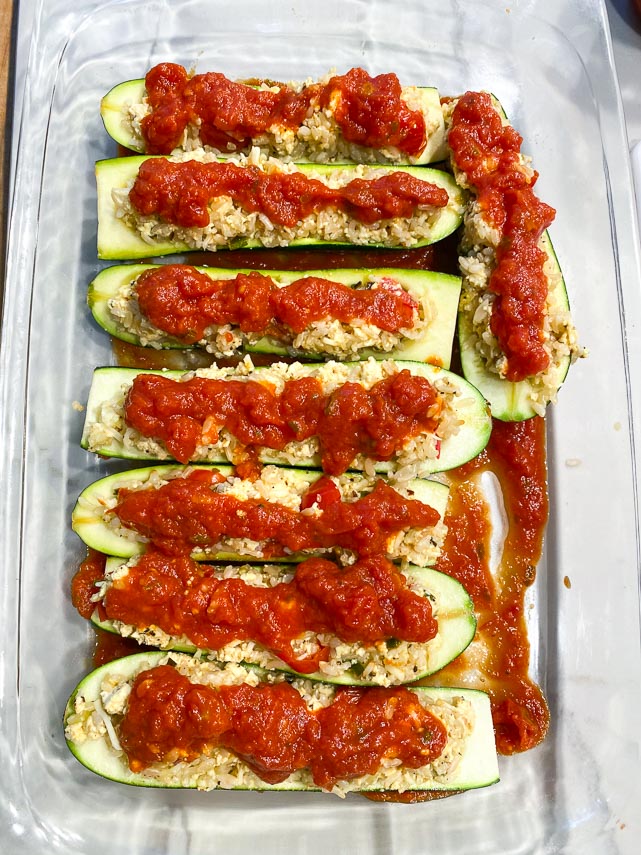
…and then remaining cheese.
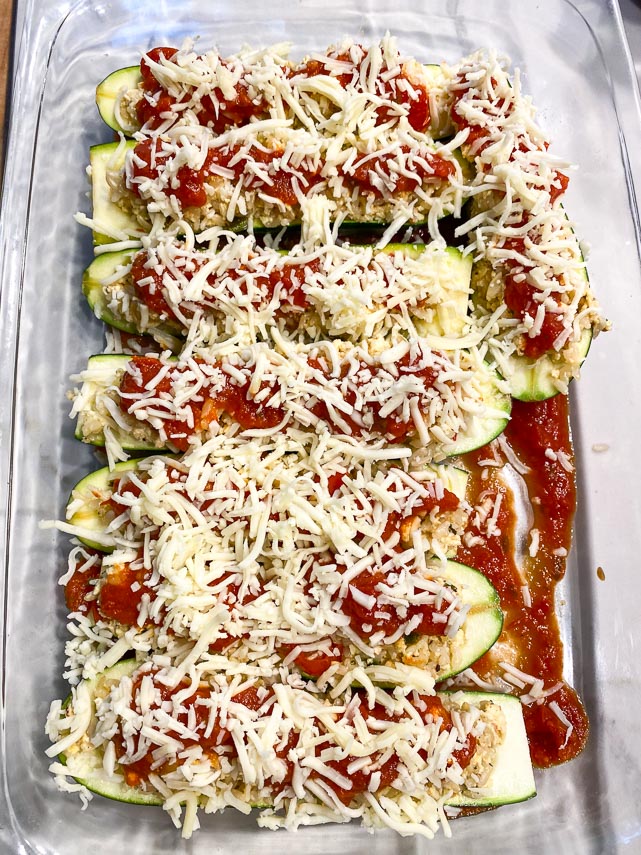
Cover tightly with aluminum foil. Bake for 20 minutes, then remove foil and bake for 10 minutes more until cheese is melted and zucchini is tender. Serve immediately.
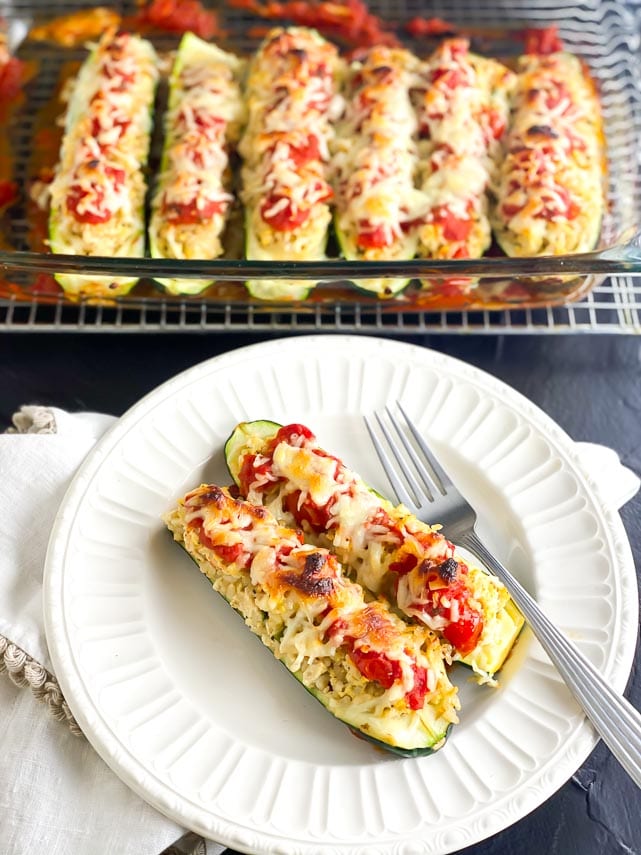
We suggest two halves as a serving – and you have to know your FODMAP tolerances for this dish!
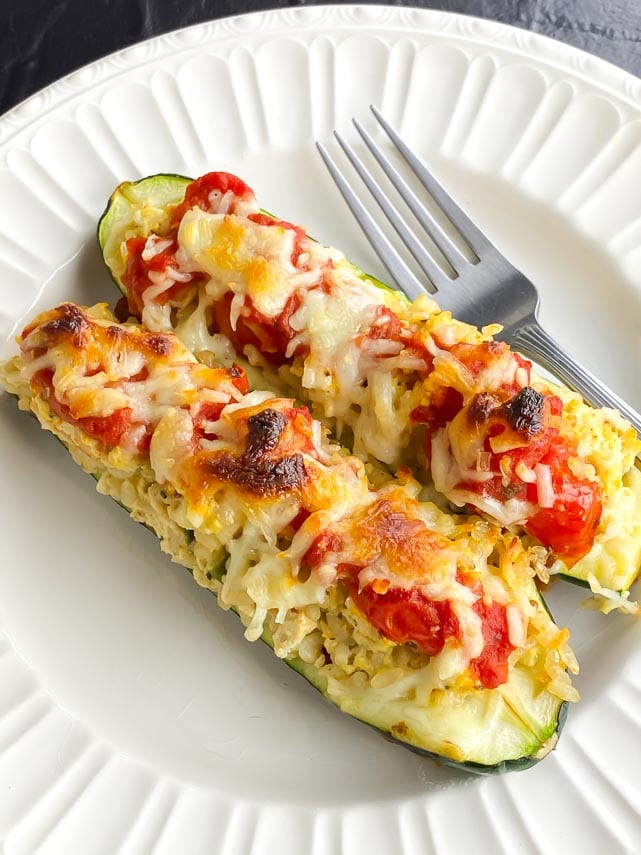
FODMAP Information
Our recipes are based on Monash University and FODMAP Friendly science.
- Cheese: Many cheeses have low FODMAP serving sizes. The low FODMAP diet is not a dairy-free diet. Hard cheeses such as Parmigiano Reggiano or Pecorino Romano have been lab tested by Monash University and are low FODMAP in 40 g amounts.
- Eggs: Eggs are high in protein and do not contain carbohydrates, according to Monash University.
- Garlic-Infused Oil: Make your own Garlic-Infused Oil or buy a commercial equivalent for the easiest way to add garlic flavor to your food. Fructans in garlic are not oil-soluble, so garlic-infused oil is low FODMAP.
- Rice: Between FODMAP Friendly and Monash University, many different kinds of rice have been lab tested and they have low FODMAP amounts. Cooked white rice, according to Monash, is low FODMAP at 1 cup (190 g). Cooked brown rice, according to Monash, is low FODMAP at 1 cup (180 g). Cooked red rice, according to Monash, is low FODMAP at 1 cup (190 g). FODMAP Friendly has lab tested black rice and says a low FODMAP serving is 125 g cooked. Note that this is less than white or brown rice. According to Monash, cooked glutinous rice at 1 cup (190 g) is low FODMAP and cooked basmati rice is low FODMAP at 1 cup (190 g).
- Scallions: The green parts of scallions are low FODMAP as determined by Monash University lab testing and can be used to add onion flavor to your low FODMAP cooking.
- Tomatoes: Both Monash University and FODMAP Friendly have lab tested common, beefsteak tomatoes. Monash University lab tests have shown no FODMAPs. FODMAP Friendly gives them a “Pass” at ½ cup (75 g) portions. Cherry tomatoes and Plum (Roma) tomatoes have also been tested by Monash and FODMAP Friendly. Both Monash and FODMAP Friendly recommend 75 g of cherry tomatoes as a serving (about 5 or ½ cup) and 75 g of plum or Roma tomatoes, which is about 1 small tomato or ½ cup.
- Zucchini: Both Monash University and FODMAP Friendly have lab tested zucchini (also called marrow or courgette). FODMAP Friendly gives it a “Pass” at ½ cup (75 g) portions; they also list that in larger amounts the vegetable contains fructose, fructans and GOS. Monash lists ⅓ cup (65 g) as low FODMAP, showing it to be Moderate for fructans in portions of ½ cup (75 g).
Please always refer to the Monash University & FODMAP Friendly smartphone apps for the most up-to-date lab tested information. As always, your tolerance is what counts; please eat accordingly. The ultimate goal of the low FODMAP diet is to eat as broadly as possible, without triggering symptoms, for the healthiest microbiome.
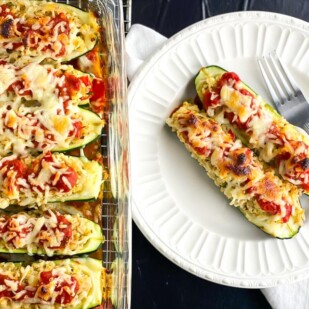
Low FODMAP Stuffed Zucchini Boats
Our Low FODMAP Stuffed Zucchini Boats are vegetarian and feature a rice, tofu and cheese filling and is covered with tomato sauce and more cheese. Please note that this recipe is for those who are in their Challenge Phase or beyond (more on that below).
Ingredients:
- 1 tablespoon Garlic-Infused Oil, made with olive oil, or purchased equivalent
- ¼ cup (16 g) finely chopped scallions, green parts only
- 8 cherry tomatoes, halved
- Large pinch each of dried basil, oregano and hot pepper flakes
- 4 medium zucchini, about 6-ounces/170 g each, stem trimmed and discarded, halved lengthwise
- 1 ½ cups (300 g) cooked rice, white or brown
- 7- ounces (200 g) extra-firm tofu, drained and finely crumbled
- 1 large egg, beaten well
- 4- ounces (115 g) shredded mozzarella, divided
- Kosher salt
- Freshly ground black pepper
- 1 cup (240 g) Quick Tomato Sauce or other low FODMAP marinara
Preparation:
-
Position rack in middle of oven. Preheat oven to 400°F (200°C). Have ready a 13-inch by 9-inch (33 cm by 23 cm) ceramic or oven-proof glass baking dish.
-
Use a teaspoon to scoop out the middle of the zucchini (all the seeds and some flesh), leaving a thin wall of flesh all around. Discard the innards.
-
Heat the oil in a skillet over medium heat and sauté the scallions and cherry tomatoes, adding your dried herbs and hot pepper flakes, and sauté for a few minutes or until vegetables soften. Scrape into a mixing bowl. Add the rice, tofu, egg, a quarter of the cheese (do this by eye), to the sautéed tomato mixture. Stir together well and season well with salt and pepper.
-
Spread a bit of the tomato sauce in the bottom of the baking dish. Stuff each zucchini half with your rice stuffing, mounding gently. Nestle the zucchini in the pan, crosswise; you might have to arrange the last one perpendicular in order to fit. Top with remaining tomato sauce and then remaining cheese. Cover tightly with aluminum foil.
-
Bake for 20 minutes, then remove foil and bake for 10 minutes more until cheese is melted and zucchini is tender. Serve immediately.
Notes:
Tips
- While I do not recommend freezing this dish, you can make it ahead, preparing through step 4. Once you seal the pan with foil you can refrigerate overnight. Bring to room temperature before baking.
FODMAP Information
Our recipes are based on Monash University and FODMAP Friendly science.
- Cheese: Many cheeses have low FODMAP serving sizes. The low FODMAP diet is not a dairy-free diet. Hard cheeses such as Parmigiano Reggiano or Pecorino Romano have been lab tested by Monash University and are low FODMAP in 40 g amounts.
- Eggs: Eggs are high in protein and do not contain carbohydrates, according to Monash University.
- Garlic-Infused Oil: Make your own Garlic-Infused Oil or buy a commercial equivalent for the easiest way to add garlic flavor to your food. Fructans in garlic are not oil-soluble, so garlic-infused oil is low FODMAP.
- Rice: Between FODMAP Friendly and Monash University, many different kinds of rice have been lab tested and they have low FODMAP amounts. Cooked white rice, according to Monash, is low FODMAP at 1 cup (190 g). Cooked brown rice, according to Monash, is low FODMAP at 1 cup (180 g). Cooked red rice, according to Monash, is low FODMAP at 1 cup (190 g). FODMAP Friendly has lab tested black rice and says a low FODMAP serving is 125 g cooked. Note that this is less than white or brown rice. According to Monash, cooked glutinous rice at 1 cup (190 g) is low FODMAP and cooked basmati rice is low FODMAP at 1 cup (190 g).
- Scallions: The green parts of scallions are low FODMAP as determined by Monash University lab testing and can be used to add onion flavor to your low FODMAP cooking.
- Tomatoes: Both Monash University and FODMAP Friendly have lab tested common, beefsteak tomatoes. Monash University lab tests have shown no FODMAPs. FODMAP Friendly gives them a “Pass” at ½ cup (75 g) portions. Cherry tomatoes and Plum (Roma) tomatoes have also been tested by Monash and FODMAP Friendly. Both Monash and FODMAP Friendly recommend 75 g of cherry tomatoes as a serving (about 5 or ½ cup) and 75 g of plum or Roma tomatoes, which is about 1 small tomato or ½ cup.
- Zucchini: Both Monash University and FODMAP Friendly have lab tested zucchini (also called marrow or courgette). FODMAP Friendly gives it a “Pass” at ½ cup (75 g) portions; they also list that in larger amounts the vegetable contains fructose, fructans and GOS. Monash lists ⅓ cup (65 g) as low FODMAP, showing it to be Moderate for fructans in portions of ½ cup (75 g).
Please always refer to the Monash University & FODMAP Friendly smartphone apps for the most up-to-date lab tested information. As always, your tolerance is what counts; please eat accordingly. The ultimate goal of the low FODMAP diet is to eat as broadly as possible, without triggering symptoms, for the healthiest microbiome.
Nutrition
All nutritional information is based on third-party calculations and should be considered estimates. Actual nutritional content will vary with brands used, measuring methods, portion sizes and more. For a more detailed explanation, please read our article Understanding The Nutrition Panel Within Our Recipes.
